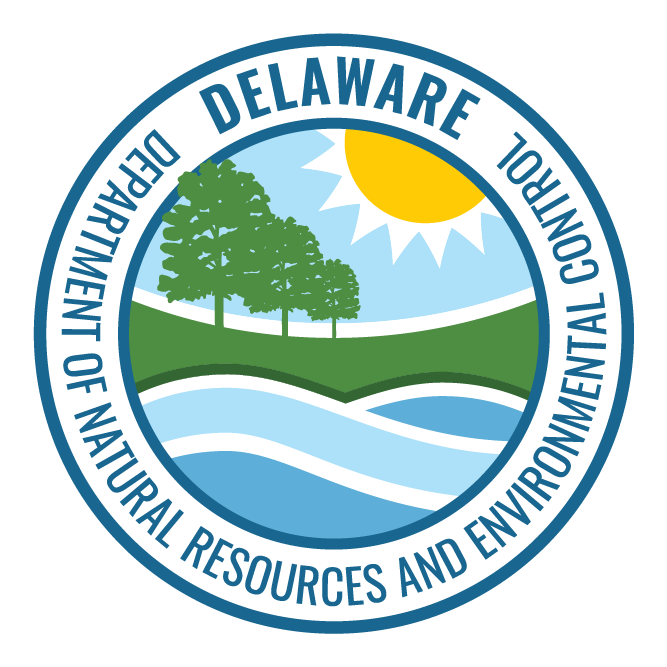Pages Categorized With: "Conservation Programs"
Delaware Wildlife Action Plan
After over eight years of implementing the 2015 Delaware Wildlife Action Plan, the DNREC Division of Fish and Wildlife has begun a comprehensive review and revision of the Plan to ensure the document remains up to date with the best available science and continues to serve the needs of Delaware’s wildlife. TheAmerican Oystercatchers
American oystercatchers are black and white shorebirds with bright orange beaks that feed and nest on the beach. The Beach-Nesting Bird Program monitors the population and productivity of American oystercatchers in Delaware. An American oystercatcher incubating a nest. (Photo: Henrietta Bellman) These birds begin arriving in Delaware in March, startLeast Terns
Least terns are the smallest species of tern in North America, with an orange-yellow beak and mask-like black markings on the head. The Beach-Nesting Bird Program monitors the population and productivity of least terns in Delaware. A male and female least tern conducting a courtship ritual. The male presents the female withBeach-Nesting Birds
Dwindling shorebird populations have landed several species on Delaware’s Endangered Species List. The DNREC Beach-Nesting Bird Program monitors the endangered breeding shorebirds, provides habitat protection, and provides information to the public about beach-nesting species. The Beach-Nesting Bird Program primarily focuses on three species — Piping Plovers, American Oystercatchers and LeastBands and Special Markers on Migratory Gamebirds
Delaware hunters may find GPS transmitters, bands or other human-created additions on migratory gamebirds they encounter during hunting seasons. Harvesting such gamebirds is legal, but hunters should report what they find to state and federal biologists. Migratory gamebird hunters should be aware of specially marked ducks, geese andBald Eagle Nesting Survey
The DNREC Division of Fish and Wildlife plans an aerial survey of bald eagle nesting sites during the late winter of 2023. You can help biologists plan for this survey by reporting bald eagle nests to the state. Report a Bald Eagle NestWildlife Mortality Survey
If you see sick wildlife, or dead wildlife where it looks like the cause of death is an illness, please report it to the DNREC Division of Fish and Wildlife. If you see five or more sick or dead wild animals at the same location, please also call division staff at 302-735-3600Reporting Sick or Dead Wildlife
Wildlife disease surveillance, prevention, and control are crucial factors for safeguarding Delaware’s citizens, wildlife, pets, and livestock. Citizen reports help state biologists monitor wildlife populations in Delaware. If you seeVolunteer With the Piping Plover Program
To ensure continued breeding success, the DNREC Piping Plover Program depends on volunteers to help inform the public about the breeding progress of the plovers and the importance of staying out of closed areas.Contact Us
Shorebird Project Staff 302-735-3600
Volunteer With the Delaware Kestrel Partnership
The kestrel monitoring program relies on community scientist volunteers who dedicate time from March through July each year to help monitor kestrel boxes across the state. This page provides information on the volunteer program and a form to register to join the effort. [panel type=”success” heading=”ContactAmerican Kestrel Monitoring and Management
American kestrel populations in Delaware have declined. Once commonly seen perched along telephone wires and fence posts, this falcon is now a rare sight across our state. The DNREC Division of Fish and Wildlife works to study and manage the state’s population of American kestrels. [panelShorebird Volunteer Form
This page is a volunteer registration form for those interested in volunteering to help with the spring field season of the Delaware Shorebird Project. Participants must be at least 18 years of age to volunteer with the Shorebird Project. Commitment Volunteers should plan on committing toHave You Seen Me?
We are mapping sightings of Delmarva fox squirrels and you can help. Use this form to report sightings and share information about this rare species. The Delmarva fox squirrel is no longer classified as an endangered or threatened species at the federal level. But it is still rare in Delaware. We are mapping thePlants and Plant Communities
Delaware has more than 1,600 species of native plants. More than a quarter of them are rare and can be found in more than 100 different terrestrial and wetland habitat types. Related Documents Status Ranking Criteria Rare Plants of Delaware Native Indigenous TreesBecome a Shorebird Project Volunteer
Spring brings the shorebird migration season. DNREC’s Delaware Shorebird Project needs experienced and dedicated volunteers for the field season each spring. To apply, please fill out the Volunteer Information Form. New applicants should include a letter of interest briefly describing their experience and what they hope to gain by volunteering.Federal Funding for Fish and Wildlife
The DNREC Division of Fish and Wildlife uses a combination of federal funds and revenue from recreational licenses and permits to fund wildlife conservation, habitat restoration, public access, hunting, fishing and other services. Delaware receives federal funds from the Wildlife Restoration Act, the Sport Fish Restoration Act, and State Wildlife Grants to support wildlifeDelaware Bay Ecology
The Delaware Bay is extraordinarily rich in biological resources. The beaches, mudflats, and marshes that line Delaware Bay provide abundant food and habitat for many species. The Delaware Bay Supports a variety of species. As many as 30 species of shorebirds visit the Delaware Bay in May. The majority arePiping Plovers
Dwindling populations have landed the Piping Plovers on the federal Endangered Species List. DNREC’s Beach-Nesting Bird Program monitors these beach-nesting birds, provides habitat protection and educates the beach-going public. Piping plovers are small sand-colored shorebirds that nest and feed on the beach. They begin arriving and nesting onShorebird Research and Monitoring
Each May, DNREC’s Delaware Shorebird Project carries out its research objectives during the shorebirds’ stopover in the Bay. The brief field season brings long, but rewarding, days on the coast. A Tradition of Research and Partnership Each year, flocks of shorebirds are carefully counted and individually markedOsprey Monitoring and Management
Delaware’s osprey population is one of the state’s greatest conservation success stories. From the days of DDT and the collapse of many raptor populations, including bald eagles and peregrine falcons, osprey in Delaware have rebounded and the population continues to grow state-wide.Contact Us
The Delaware Shorebird Project
Shorebirds are an important part of the ecology of Delaware’s shorelines. But they are under threat; populations are declining. DNREC’s Delaware Shorebird Project works to mitigate that threat, through research and monitoring, habitat protection, and management planning. The Shorebird Project team has conducted research and monitoring since 1997. They haveDo-it-Yourself Phragmites Control Tips
The Division of Fish and Wildlife offers a phragmites control cost-share program to help landowners control larger stands of phragmites. There are steps landowners can take themselves to control smaller areas of phragmites. Herbicides That Can be Used Sources for Aquatic GlyphosateCost Share Program Questions and Answers
A list of frequently asked questions, and answers, about the phragmites control cost-share program offered by the Division of Fish and Wildlife.Contact Us
James Joachimowski Impoundment/Habitat Biologist 302-725-3638




